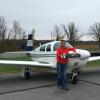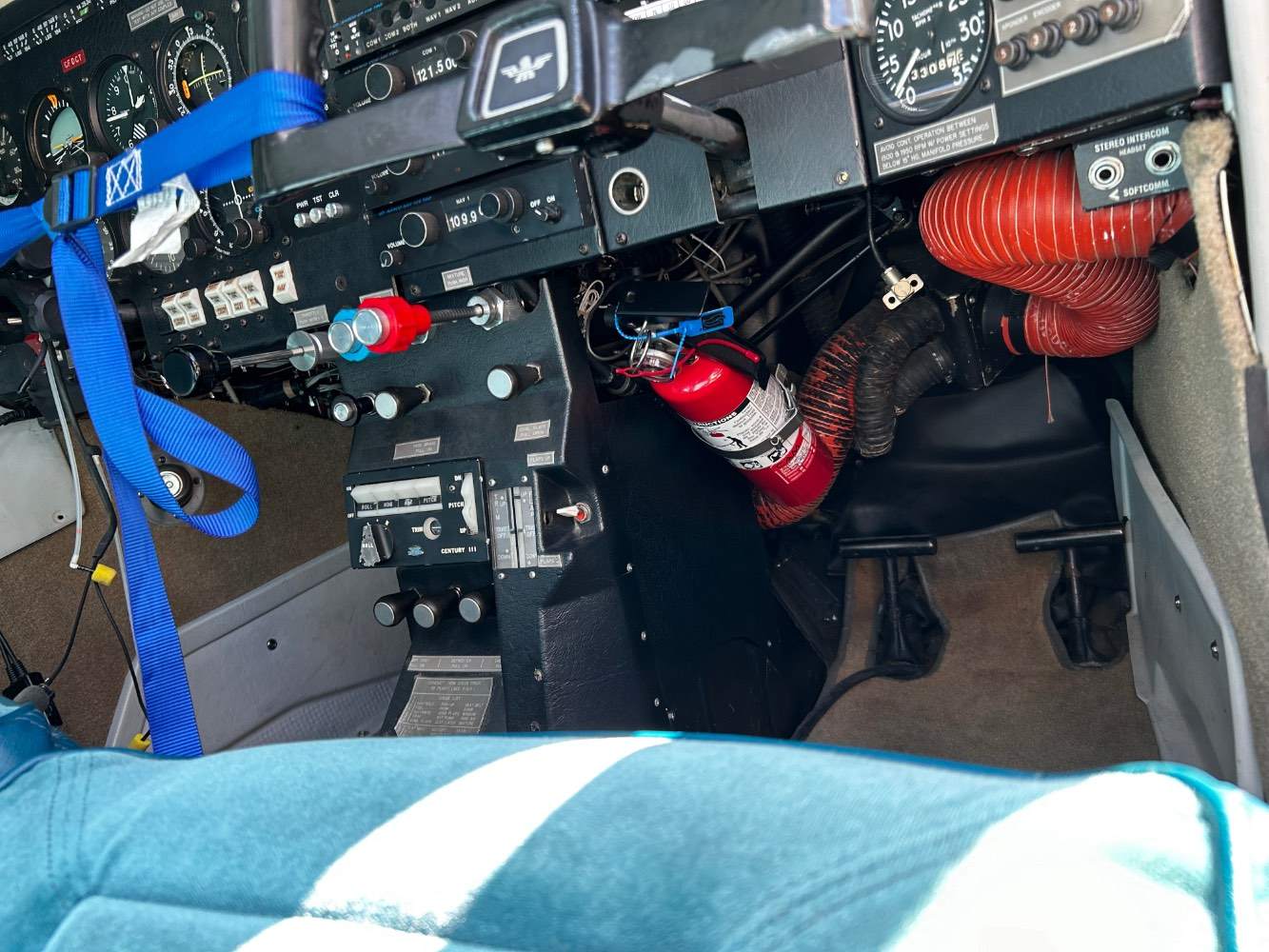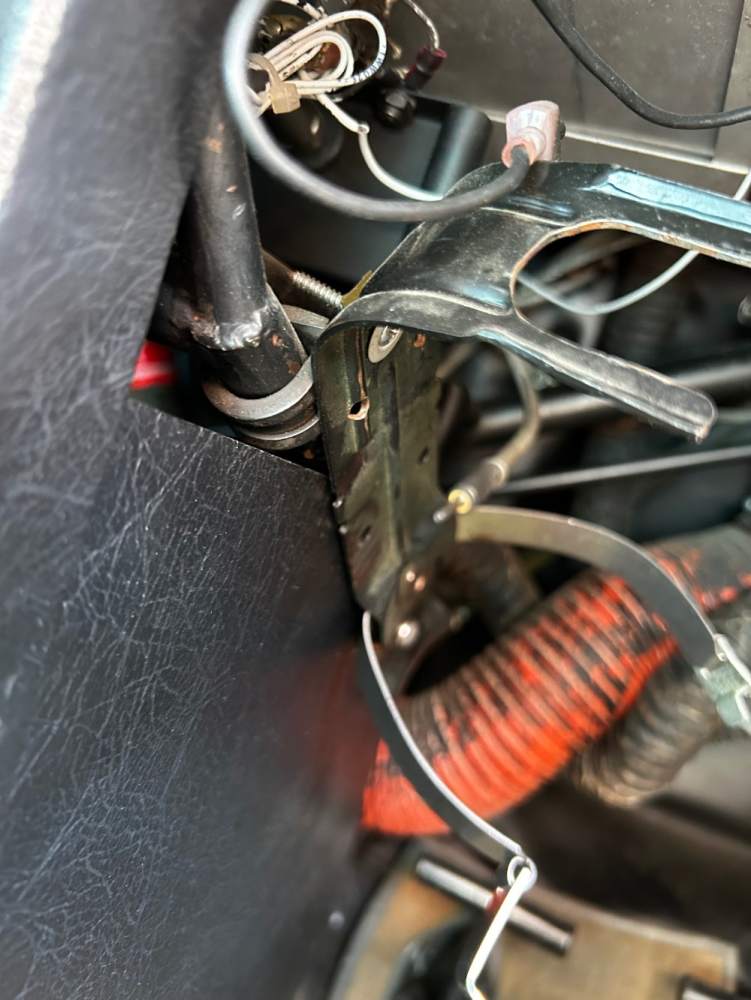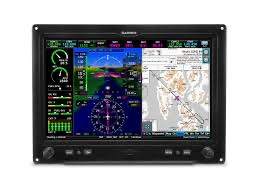-
Posts
171 -
Joined
-
Last visited
Content Type
Profiles
Forums
Blogs
Gallery
Downloads
Events
Store
Everything posted by blaine beaven
-
I’ve always thought something like this might be great: https://elementfire.com but I don’t know that they have FAA approval. Less space, less mess, just as effective?
-
Thanks for reminding me why I seldom share on this site… It’s not screwed into the plastic; as noted above it’s mounted on the steel tube frame. Defrost hoses are getting changed during the panel upgrade along with cleaning up the general rats nest of old wires. 99% of my flights are by myself. When I do have a passenger, they are rarely sitting forward enough to be close to that extinguisher. It’s solidly mounted, so they would hit it in turbulence about the same as if they hit any other part of the plane. Please, drill into your spar and hide the extinguisher under your rear passenger’s legs, a far superior location…
-
-
When I bought my 78J the extinguisher was mounted on the floor in front of the back seat. Not an easy place to reach. I moved it to mount on the side of pedestal under the instrument panel in the passenger footwell. There is a structural tube of some sort running from the throttle quadrant area to the firewall. I used two adell clamps wrapped around that tube to attach the fire extinguisher bracket. It is not at risk of being stepped on, is out of sight, and I can easily reach it from the pilot seat. I’ll try to remember to take a picture next time I am at the plane.
-

Yoke position on the ground
blaine beaven replied to blaine beaven's topic in Modern Mooney Discussion
In case anyone was curious as to the outcome of this, during the annual this week we checked the interconnect springs. Neither are broken or weak. We swapped them to see if it made a difference and it made no difference. My mechanic presumes that the cause of the yoke "drooping" is just the nature of the geometry of the linkages and the interconnect in my particular plane. as soon as any pressure is applied to the rudder pedals the yoke centers immediately. This seems to be more a "cosmetic" issue as the plane flies fine. But if anyone else has had this happen or any other ideas I am happy to hear them. Otherwise, I'm not going to chase it down much further. -
@PT20J I hope that you’re writing a book with all your experiences… you could pitch it to everyone that buys a G3X!
-

G5 still the best option for G3X backup instrument
blaine beaven replied to PT20J's topic in Avionics/Panel Discussion
Has this changed yet, and the GI 275 is able to drive an autopilot with a G3X? I’m going to order equipment next week for my avionics upgrade and wondering about GI 275 v G5. Thanks! -

Baggage Door Exit on early J, and earlier models
blaine beaven replied to gtprend's topic in Modern Mooney Discussion
I was riding backseat in a piper Aztec about 20 years ago during my training (I was only flying on empty legs). Shortly after takeoff, still during climb and within 2 miles of the runway, the passenger next to the door noticed the handle wasn’t all the way forward, and decided to remedy that. Unfortunately he pulled it in the wrong direction and it popped open. It felt like we dropped about 150 feet almost immediately. The door never came open more than a couple inches. It got super windy and loud, and the pilot turned back to the runway. He was distracted enough he forgot to put the gear down and when on final I was able to yell at him to put it down. My thought on the initial drop is that the open door managed to blank out a good chunk of the right elevator given our speed and angle of climb. It was scary, and it’s not surprising that people get flustered and ball a plane up when this happens. -
When I read about your initial power loss it reminds me of a situation I had where I had flown somewhere in the morning, the plane sat in the sun all day, I refueled - but not filled - in the hot afternoon. On the flight home climbed up high and had some bumps (hot summer day). About a minute after I put the nose down to decend, there was a change in sound and power output that lasted about 5 seconds. I spent some money chasing this phantom. Checked fuel injectors, spark plugs, valve clearances, scoped cylinders etc. The best explanation I received was from the owner of an engine rebuild shop. He said that flying home likely washed the condensation off the walls and ceiling of the tank into the fuel, they took time to condense, it settled into the low point, and when I put the nose down to descend it sucked in some water. His advice was that if I’m fuelling, fuel earlier in the day, shake the wings and let it rest for 10 or so minutes before sumping. On the topic of the stiff mixture cable, I had the same problem at another time, and it was a fuel servo that was failing. Confirmed that by disconnecting mixture cable and then it moved smoothly. The arm on the fuel servo it connected to did not move smoothly, and was indicative of further internal failures. Good luck!
-

Air / Oil Separator -- Pros / Cons
blaine beaven replied to MisfitSELF's topic in General Mooney Talk
When I bought my plane in 2014 my mechanic noticed that the overboard hose from my separator didn’t have a “Jesus hole” in it. Basically, about 6” above the bottom of the firewall, before the curve of the metal end of the hose that comes out the cowl flap, he drilled a small hole. The idea being that if the end of the hose freezes up, the pressure can still escape without blowing out any seals in the engine. The hole in the cowling shouldn’t freeze up. And there is enough vacuum/pressure that in normal conditions it doesn’t leak. I’ve never noticed any mess or residue around the Jesus hole, so I assume I have yet to freeze it up despite flying in some pretty cold temps. -

M20J Blower fan retrofit kit
blaine beaven replied to blaine beaven's topic in Modern Mooney Discussion
I’m well aware I can crack the door and pop the window - but I’d like to consider retrofitting a blower motor so hopefully someone with that experience can pass it on. When the panel is pulled apart I am going to replace hoses, check connections etc to ensure I’m optimizing what I have. Thanks! -

M20J Blower fan retrofit kit
blaine beaven replied to blaine beaven's topic in Modern Mooney Discussion
It’s actually less about the heat in the winter… more for airflow on the ground on hot summer days. I am doing a panel upgrade and want to put some eyeball vents in the dash; thinking if I tie them into the defroster lines and put a blower I may get some cooling air on the wife and kids in the summer on a hot day. But would be useful for defrost on the ground in the winter too perhaps? -
On page 6 21-40-00 of the M20J IPC it makes reference to a retrofit kit to add a defroster fan. Google doesn’t turn up much; do these exist? Has anyone done this? I would like to add some more air movement in the ventilation system if possible. I have a 1978J 24-0471 so I should be eligible by serial number. Thanks!
-
Ah - my plane has no shoulder harnesses in the rear.
-
How are you supposed to attach that to the ceiling? The only cargo attach points are on the floor
-

Let the games begin - MAJOR Avionics Upgrade.
blaine beaven replied to Pinecone's topic in Avionics/Panel Discussion
@Pinecone this looks like it will be an awesome upgrade. Many well wishes for a painless experience. Are you going to keep your stormscope? I am planning an upgrade similar to yours. I currently have a WX8 that I have found quite useful in the summer, but there is limited real estate in these panels… would be happy to hear your opinion on keeping it or not. -
I suppose an alternative to attaching it to the existing bolts that attach the tie downs would be to make the base of it large enough that the cargo and seat would hold it in place.
-

Tanis Cabin/ Avionics Pre-Heater?
blaine beaven replied to William Munney's topic in Modern Mooney Discussion
@Pinecone I’m asking the question because the OP said: And I’m curious if that is actually a problem with these avionics - do they get damaged from sitting in the cold. The OP seems to suggest that he is keeping his heated all the time to prevent damage, and I am wondering if that is necessary. -

Tanis Cabin/ Avionics Pre-Heater?
blaine beaven replied to William Munney's topic in Modern Mooney Discussion
Does that have an impact on the service life of those avionics? I can understand not starting them cold, but what is the damage if they sit in -30c for a week, then you warm them up to +15C before you go flying? -
I’ve thought about this in the past… what I’ve considered doing is building a metal frame that bolts to the cargo area floor using the existing cargo strap attach points. The frame would extend forward and outwards to the corners of the cargo area behind the rear seat, then turn upward to follow the back of the seat. At the top of the bench seat it would angle straight up to the roof, following the contour of the cabin and joining at the headliner. On the interior of this frame would be attach points and a mesh net, basically creating a barrier between the occupant space and the cargo space. Anyone want to build and market this with me? We can spend millions to make thousands…
-
A lot of pilots who have most of their time on light Cessnas (172/150 etc) get away with not being proactive on trim. A Mooney has to be trimmed. All the time. This is the same as any other heavier single or light twin. Get used to it, and get proficient at it. You’ll love how solid the plane feels in cruise compared to lighter aircraft. Have fun!
-
In most pictures of the G3X in split screen mode I see the EIS strip, artificial horizon, and DG on the left side with the charts etc on the right side. Example photo for reference: Is it possible to reverse that? To have the EIS strip on the far right side, beside the AI/DG/SVT with the charts? I’m not convinced that is what I would want, but I just want to know if that capability is there, or if I would be stuck looking at it as Garmin dictates. Thanks!
-

G3X fails, GFC 500 won't switch to G5
blaine beaven replied to PT20J's topic in Avionics/Panel Discussion
@PT20J did you ever rectify this? I’m looking at a similar install. Thanks! -

G3X / GTN / GTX 345 Connext to ForeFlight
blaine beaven replied to PT20J's topic in Avionics/Panel Discussion
To resurrect this thread, I have a friend with a G3X, GTN 650xi, and GNC 355. He does not have a FS510 card. He uses his iPad to send his flight plan to the 355 via Bluetooth, which then sends it to the 650. As far as I understand it, he does not send his flight plans to the G3X, just to the 355. So there seems to be multiple ways to do this. He does his database updates with SD cards; so far he isn’t regretting not having the FS510 card.








